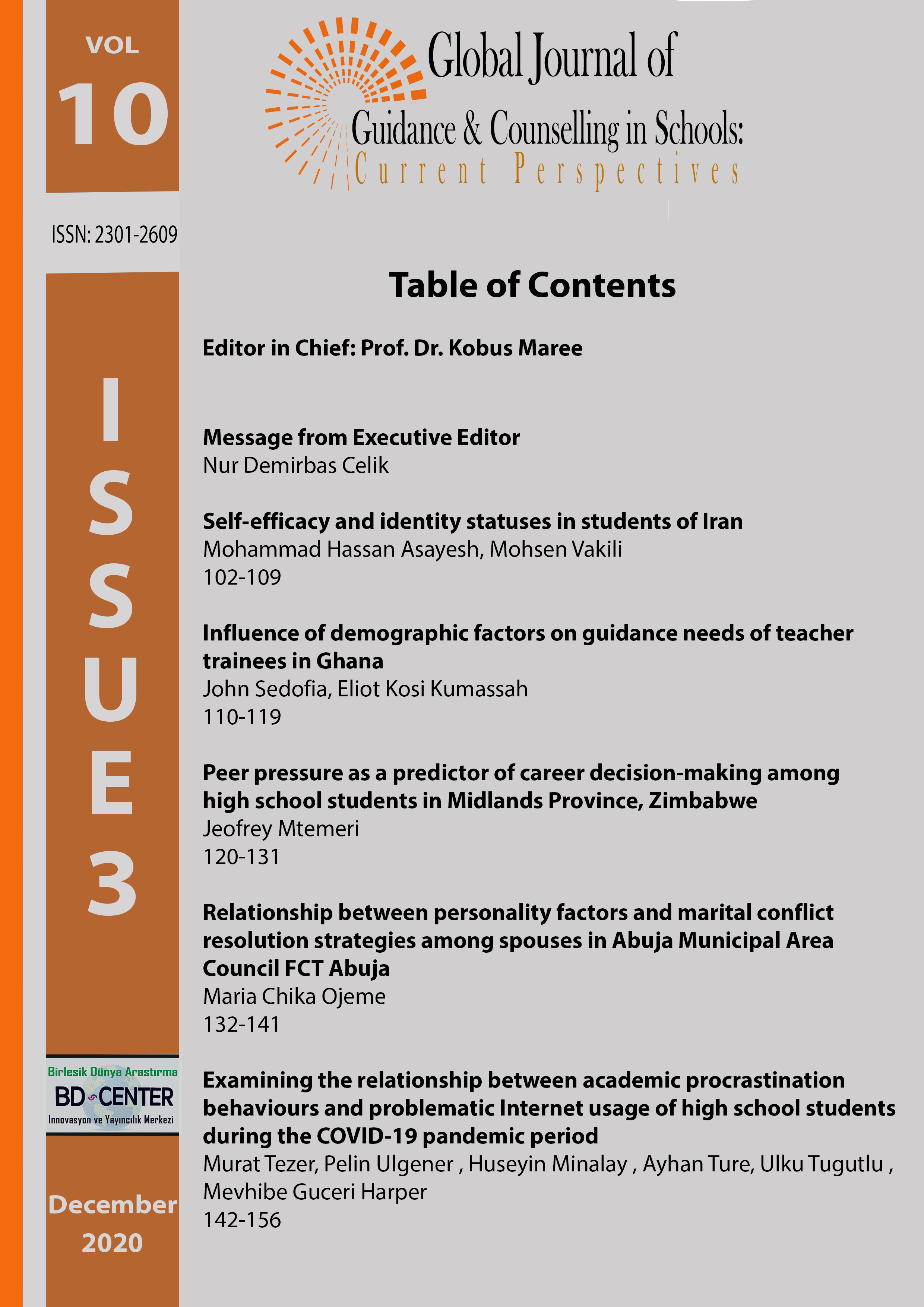Self-efficacy and identity statuses in students of Iran
Main Article Content
Abstract
The purpose of the present study is to analyse the relationship between identity status and self-efficacy. The statistical population included all graduate students employed at the Training Centre of Ayatollah Khatami in the city of Yazd in 2009. The sample consisted of 122 students who were selected by convenience sampling. The chosen research method is descriptive correlational. Bennion and Adams’ Extended Objective Measure of Ego Identity Status and the Self-Efficacy Scale were used for measuring the identity statuses and self-efficacy. The results of this study show that there is a positive significant relationship between achieved identity status, self-efficacy (p < 0.01) and diffused identity; there is a negative significant relationship between diffused identity status and self-efficacy (p < 0.05); and there is a negative significant relationship between foreclosure identity status and self-efficacy (p < 0.01). According to this study, for providing qualified forces, the training centres can employ forces by detecting identity statuses and self-efficacy of volunteers.
Â
Keywords: Identity, identity status, students, self-efficacy.
Downloads
Article Details

This work is licensed under a Creative Commons Attribution 4.0 International License.
